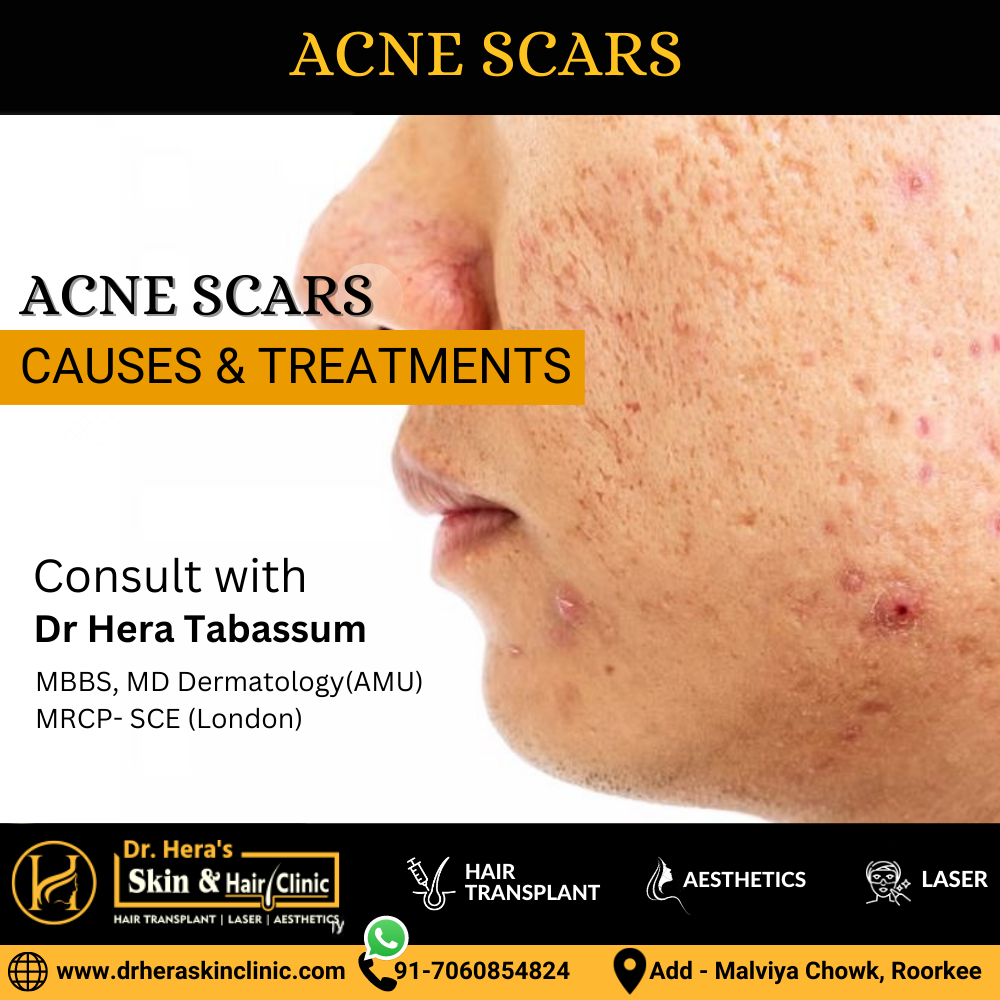Acne Scars
What could be more annoying than that angry, red acne? How they leave scars behind! Acne scars frequently persist for a long time, much like that tedious coworker who overstays their welcome and bores you with their opinions on everything.
The acne scar goes through two stages.
Inflammatory stage (Red and inflamed scar)
The fact that the skin’s appendages do not regenerate causes scar tissues to have a unique appearance and feel. The scars conceal the pores and hair follicles. They appear shiny and thinner as a result.
How can you spot this stage?
Red scars
Red scars are merely the first stage of inflammation; when there is much tension surrounding a healing wound, they become hypertrophic scars. These scars are large, raised and frequently colored red.
Brown scar
Brown scar: Scar tissue exposed to sunlight during healing may become pigmented.
How Can You Help?
“At this point, you must concentrate on calming your skin down,” advises Dr Hera Tabassum. Reduce your use of abrasive ointments like salicylic acid or benzoyl peroxide. Moisturize your skin next. For calmer skin, apply calamine lotion or clay masks.

Treatments
1064 and a 5352 NdYag Laser
We use lasers and peels to treat Acne scars effectively at Dr Hera’s Skin & Hair Clinic.
Multipolar with RF: Increases the rate at which new collagen and elastin are produced. Currents generated by radiofrequency alternate between high- and low-frequency currents at least a thousand times per second. As a result, the skin becomes tighter, and the deeper skin tissues are healed, which increases blood flow.
Micro-needling is a technique that uses needles, a derma roller, or automated machinery to injure the skin for several minutes. Additionally, radiofrequency can be used in conjunction with micro-needling. It is especially effective on acne scars with pits.
Scars with post-inflammatory hyperpigmentation (PIH) that are black, brown, or grey
All skin types can develop post-inflammatory hyperpigmentation (PIH), a hyper melanosis condition that follows cutaneous inflammation or injury, but patients with skin of color are more likely to develop it. A 2019 study on acne in people with darker skin discovered that 48.4% of Asian patients had PIH brought on by acne.
How is PIH caused?
Melanin overproduction or irregular distribution of pigments following cutaneous injury are the two main contributing factors to PIH.
The color of the skin is determined by the location where there are too many pigments in the skin’s layers.
How can you spot this phase?
A GREY SCAR is a tissue reaction to injury that gives the skin a grey, pale, or bluish tint. This condition is known as PIH.
Black mark: Hyperpigmentation causes black marks on the face. The excessive production of melanin by the skin causes this common skin condition.
The good news is that chemical peels, laser therapy, and light therapy are safe and efficient PIH treatments.
Treatments
Q Switched Laser: It deeply penetrates the skin to eliminate dark brown or black pigments. At Ra, we utilize Medlite, which has received FDA approval, and other technology-related equipment like Revlite and Tribeam.
The severity of acne scarring can worsen if the right treatments are not sought immediately.
Schedule a consultation with our best dermatologist in Roorkee.
